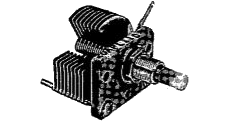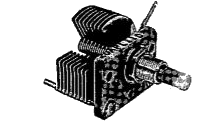A musical scale that is not based on any one key note but has the same character independent of the starting note is known as an equally tempered scale. If in this scale, an octave is divided into 12 half-tones , what are the frequencies of the successive half-tones between a note of frequency 256 Hz and its octave?
Step by step video & image solution for A musical scale that is not based on any one key note but has the same character independent of the starting note is known as an equally tempered scale. If in this scale, an octave is divided into 12 half-tones , what are the frequencies of the successive half-tones between a note of frequency 256 Hz and its octave? by Physics experts to help you in doubts & scoring excellent marks in Class 11 exams.
Updated on:21/07/2023Topper's Solved these Questions
Similar Questions
Knowledge Check
A note has a frequency of 128 Hz. What is the frequency of a note two octaves higher than it?
A32 HzB64 HzC512 HzD256 HzA musical scale is constructed by providing intermediate frequencies between a note and its octave which
AForm an arithmetic progressionBForm a geometric progressionCBear a simple ratio with their neighboursDForm a harmonic progressionTwo musical notes that have a frequency ratio of 2 : 1 are said to be separated by an octave.
A musical note that is separated by an octave from middle C (256 Hz) has a frequency of _______ .A128 HzB254 HzC258 HzD345 Hz
A certain musical scale consists of exactly six notes: F, G, H, I, J and K. The notes are arranged from the lowest (the first note of the scale) to the highest (the sixth note of the scale). Each note appears once and only once in the scale, and the intervals between the notes are all equal.
i) J is lower than K.
ii) G is higher than F.
I is somewhere between F and G.
H is the highest note of scale.
If F and I are separated by exactly one note, which of the following must be true ?
View SolutionA plano creates sound by gently strinking a taut wire with a soft hammer when a key on the piano is pressed.All piano wires in a given piano are approximately the same length.However, each wire is tied down at two points.the bridge and the giraffe. The length of the wire between the bridge and the agraffe is called the speaking length.The speaking length is the part of the wire that resonates.The point of the wire struck by the hammer is displaced perpendicularly to the wire's length.A standing wave is generated by the hammer strike, where v is the velocity of travelling wave.T is the tension in the wire, and μ is the mass per unit length of the wire.
v=√Tμ
Tuning a piano involves adjustment of the tension in the wires until just the right pitch is achieved.Correct pitch is achieved by listening to the beat frequency between the piano and a precalibrated tuning fork.
A piano note is compared to a tuning fork vibrating at 440 Hz.Three beats per second are listened by the piano tunner.When the tension in the string is increased slightly, the beat frequency increases.What was the initial frequency of the piano wire ?
View SolutionRead the following text and answer the following questions on the basis of the same:
Tuning a radio set: In essence the simplest tuned radio frequency receiver is a simple crystal set. Desired frequency is tuned by a tuned coil/ capacitor combination, and then the signal is presented to a simple crystal or diode detector where the amplitude modulated signal, is demodulated. This is then passed straight to the headphones or speaker. In radio set there is an LC oscillator comprising of a variable capacitor (or sometimes a variable coupling coil), with a knob on the front panel to tune the receiver.
Capacitor used in old radio sets is gang capacitor. It consists of two sets of parallel circular plates one of which can rotate manually by means of a knob. The rotation causes overlapping areas of plates to change, thus changing its capacitance. Air gap between plates acts as dielectric.
The capacitor has to be tuned in tandem corresponding to the frequency of a station so that the LC combination of the radio set resonates at the frequency of the desired station.

When capacitive reactance (XC) is equal to the inductive reactance (XL), then the resonance occurs 1 and the resonant frequency is given by ω0=1√LC current amplitude becomes maximum at the resonant frequency. It is important to note that resonance phenomenon is exhibited by a circuit only if both L and C are present in the circuit. Only then do the voltages across L and C cancel each other (both being out of phase) and the Current amplitude is open, VmR, the total source voltage appearing across R.
This means that we cannot have resonance in a RL or RC circuit.
Resonance frequency is equal to:
View SolutionRead the following text and answer the following questions on the basis of the same:
Tuning a radio set: In essence the simplest tuned radio frequency receiver is a simple crystal set. Desired frequency is tuned by a tuned coil/ capacitor combination, and then the signal is presented to a simple crystal or diode detector where the amplitude modulated signal, is demodulated. This is then passed straight to the headphones or speaker. In radio set there is an LC oscillator comprising of a variable capacitor (or sometimes a variable coupling coil), with a knob on the front panel to tune the receiver.
Capacitor used in old radio sets is gang capacitor. It consists of two sets of parallel circular plates one of which can rotate manually by means of a knob. The rotation causes overlapping areas of plates to change, thus changing its capacitance. Air gap between plates acts as dielectric.
The capacitor has to be tuned in tandem corresponding to the frequency of a station so that the LC combination of the radio set resonates at the frequency of the desired station.

When capacitive reactance (XC) is equal to the inductive reactance (XL), then the resonance occurs 1 and the resonant frequency is given by ω0=1√LC current amplitude becomes maximum at the resonant frequency. It is important to note that resonance phenomenon is exhibited by a circuit only if both L and C are present in the circuit. Only then do the voltages across L and C cancel each other (both being out of phase) and the Current amplitude is open, VmR, the total source voltage appearing across R.
This means that we cannot have resonance in a RL or RC circuit.
Name the phenomenon involved in tuning a radio set to a particular radio station.
View SolutionRead the following text and answer the following questions on the basis of the same:
Tuning a radio set: In essence the simplest tuned radio frequency receiver is a simple crystal set. Desired frequency is tuned by a tuned coil/ capacitor combination, and then the signal is presented to a simple crystal or diode detector where the amplitude modulated signal, is demodulated. This is then passed straight to the headphones or speaker. In radio set there is an LC oscillator comprising of a variable capacitor (or sometimes a variable coupling coil), with a knob on the front panel to tune the receiver.
Capacitor used in old radio sets is gang capacitor. It consists of two sets of parallel circular plates one of which can rotate manually by means of a knob. The rotation causes overlapping areas of plates to change, thus changing its capacitance. Air gap between plates acts as dielectric.
The capacitor has to be tuned in tandem corresponding to the frequency of a station so that the LC combination of the radio set resonates at the frequency of the desired station.

When capacitive reactance (XC) is equal to the inductive reactance (XL), then the resonance occurs 1 and the resonant frequency is given by ω0=1√LC current amplitude becomes maximum at the resonant frequency. It is important to note that resonance phenomenon is exhibited by a circuit only if both L and C are present in the circuit. Only then do the voltages across L and C cancel each other (both being out of phase) and the Current amplitude is open, VmR, the total source voltage appearing across R.
This means that we cannot have resonance in a RL or RC circuit.
Resonance occurs only when:
View Solution
